The first stop on your Ha Giang journey is the Kilometer Zero milestone – a famous check-in spot for adventurers. Though not a bustling tourist attraction, this place holds special significance for travelers and anyone who loves Vietnam’s northernmost region. Join Phieu Travel as we explore more about Ha Giang’s Kilometer Zero milestone in this article!
1. What Makes Ha Giang’s Kilometer Zero Milestone Special
The Kilometer Zero (Km0) milestone sits in the center of Ha Giang City, marking the starting point for adventures across the rocky plateau and legendary routes like Ma Pi Leng Pass and Lung Cu Flag Tower. Few people know that there are actually two Km0 markers located next to each other, each with its own unique significance.
The first marker is a simple concrete traffic guide post, displaying straightforward information like “Ha Giang 0 km” and “Tuyen Quang 155 km.” The second marker, placed within the March 26 Square, is crafted from marble and natural stone, engraved with comprehensive geographical data and the history of Ha Giang province in three languages: Vietnamese, English, and Chinese.
Despite offering no specific services or experiences, the Km0 milestone continues to attract visitors because it symbolizes the beginning of their Ha Giang exploration. A check-in photo here isn’t just a souvenir but almost a declaration: “I have set foot in Ha Giang.”

The Ultimate Ha Giang Loop Guide (2025): Itinerary, Map & Tips
2. Where to Find Ha Giang’s Kilometer Zero and How to Get There
Ha Giang’s Kilometer Zero milestone is located right in the city center, inside a park opposite March 26 Square and beside the Lo River. It marks the beginning of National Highway 2, connecting Ha Giang with Hanoi, and sits on Nguyen Trai Street – the main thoroughfare leading to Quan Ba, Dong Van, and Meo Vac. The smaller concrete milestone sits right on National Highway 2, while the larger marker stands inside the park. The distance between the two is just a few steps.
To reach this spot from Hanoi, you can take a sleeper bus to Ha Giang, covering approximately 300km in about 7-10 hours. Upon arriving at Ha Giang bus station, travel an additional 2-3km by taxi or motorbike to reach this famous check-in location.
3. 8 Famous Destinations Near Ha Giang’s Kilometer Zero
When you visit Ha Giang’s Kilometer Zero milestone, you can easily explore these 8 famous nearby destinations:
| Destination | Distance from Km0 |
| 1. March 26 Square | Opposite |
| 2. Quan Ba Twin Mountains | ~ 50 km |
| 3. Pao’s House | ~ 123 km |
| 4. Dong Van Karst Plateau | ~ 124 km |
| 5. Hmong King Palace | ~ 132 km |
| 6. Pa Vi Hmong Village | ~ 155 km |
| 7. Ma Pi Leng Pass | ~ 150 km (to the pass’s start) |
| 8. Lung Cu Flag Tower | ~ 170 km |
3.1 March 26 Square
Directly opposite the Km0 milestone is March 26 Square. This 3,000m² space regularly hosts major provincial events like the annual Buckwheat Flower Festival in October or November. If you visit during these times, you can participate in lively outdoor activities and experience the highland culture firsthand.
Next to the square flows the Lo River, creating a refreshing atmosphere perfect for strolling, sightseeing, or taking memorable photos.

3.2 Quan Ba Twin Mountains (Fairy Mountains)
The Quan Ba Twin Mountains, also known as Fairy Mountains, are located in Tam Son town, Quan Ba district, about 50km from Ha Giang center. These two symmetrical peaks rising from the valley have naturally rounded shapes and are linked to a legend about maternal love. They’re considered a distinctive geographical symbol of the rocky plateau region.
To fully appreciate this landscape, stop at Quan Ba Heaven’s Gate. This ideal vantage point allows you to easily survey both the twin mountains and the winding terraced fields below. It’s a perfect spot to rest, take photos, and admire the natural beauty.

3.3 Pao’s House
Pao’s House is situated in Sung La Valley, Dong Van district, approximately 123km from Ha Giang’s Km0 milestone. This century-old house features distinctive stone wall architecture, yin-yang tiled roofs, and traditional wooden gates typical of highland Hmong people. It served as the main setting for “The Story of Pao” – a film that won Vietnam’s Golden Kite Award.
In spring, Pao’s House courtyard blooms with peach and plum blossoms. Visitors can purchase tickets to explore, take photos, and discover indigenous cultural life in the peaceful setting of the rocky plateau.
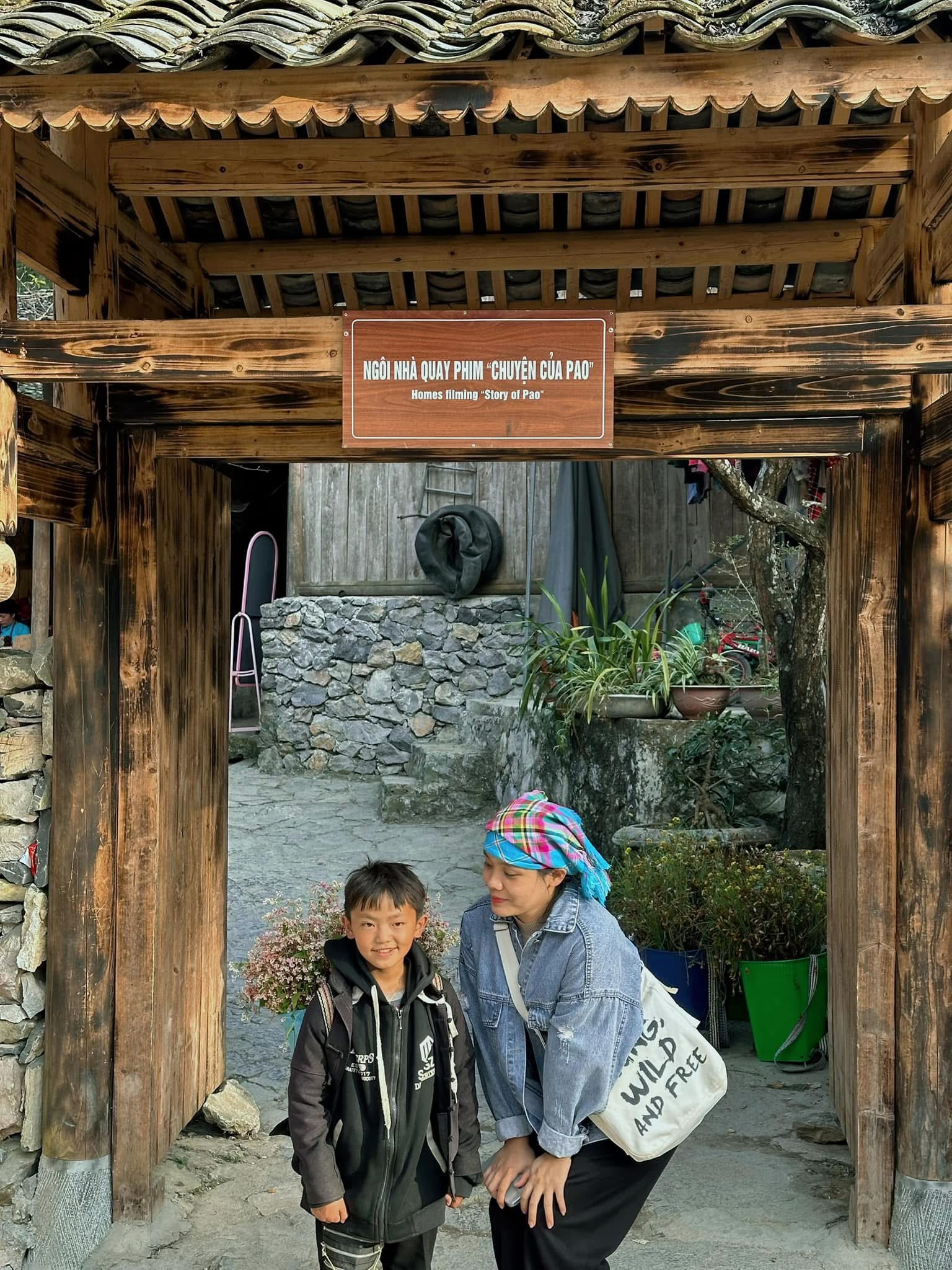
3.4 Dong Van Karst Plateau
The Dong Van Karst Plateau lies about 124km from the Km0 milestone, at an elevation exceeding 1,400m above sea level. This distinctive limestone terrain spans four districts: Quan Ba, Yen Minh, Dong Van, and Meo Vac. The entire area preserves its pristine beauty, featuring unique “cat ear” rock formations interspersed with ethnic minority villages.
According to geologists, this plateau retains clear traces of Earth’s crust formation dating back hundreds of millions of years. In 2010, UNESCO recognized the Dong Van Karst Plateau as Vietnam’s first Global Geopark and the second in Southeast Asia. This designation has brought significant value and potential for developing tourism and geological studies in Ha Giang.
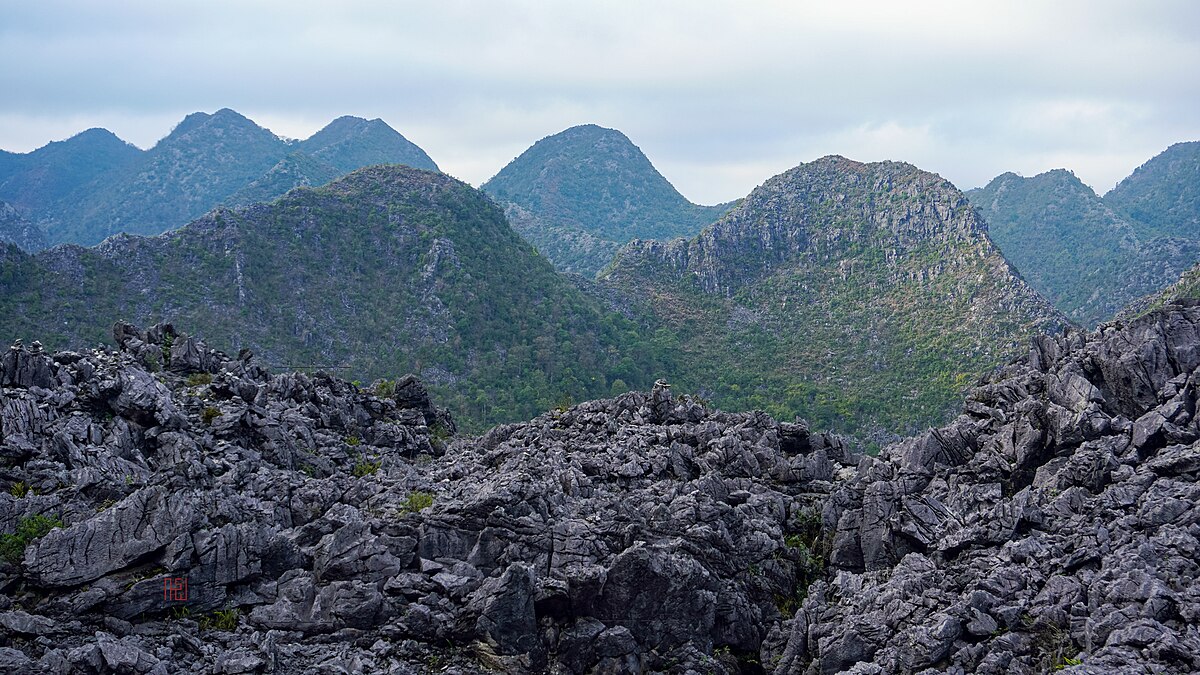
Dong Van Karst Plateau Travel: What to Do, When to Go and Must-Visit Places
3.5 Hmong King Palace (Vuong Family Mansion)
Located about 132km from Ha Giang’s Kilometer Zero is the Vuong Family Mansion – a destination rich in historical and cultural value on the rocky plateau. This site in Sa Phin village, Dong Van district, was built in the late 19th century by Vuong Chinh Duc – then the leader of the local Hmong community.
The entire complex covers nearly 1,200m² and comprises three main areas: Front Palace, Middle Palace, and Rear Palace. The architectural style blends Chinese, French, and indigenous influences, evident in the yin-yang tiled roofs, locally quarried green stone, and precious sa moc wood. The location was chosen according to feng shui principles, both to preserve vital energy and create defensive advantages.
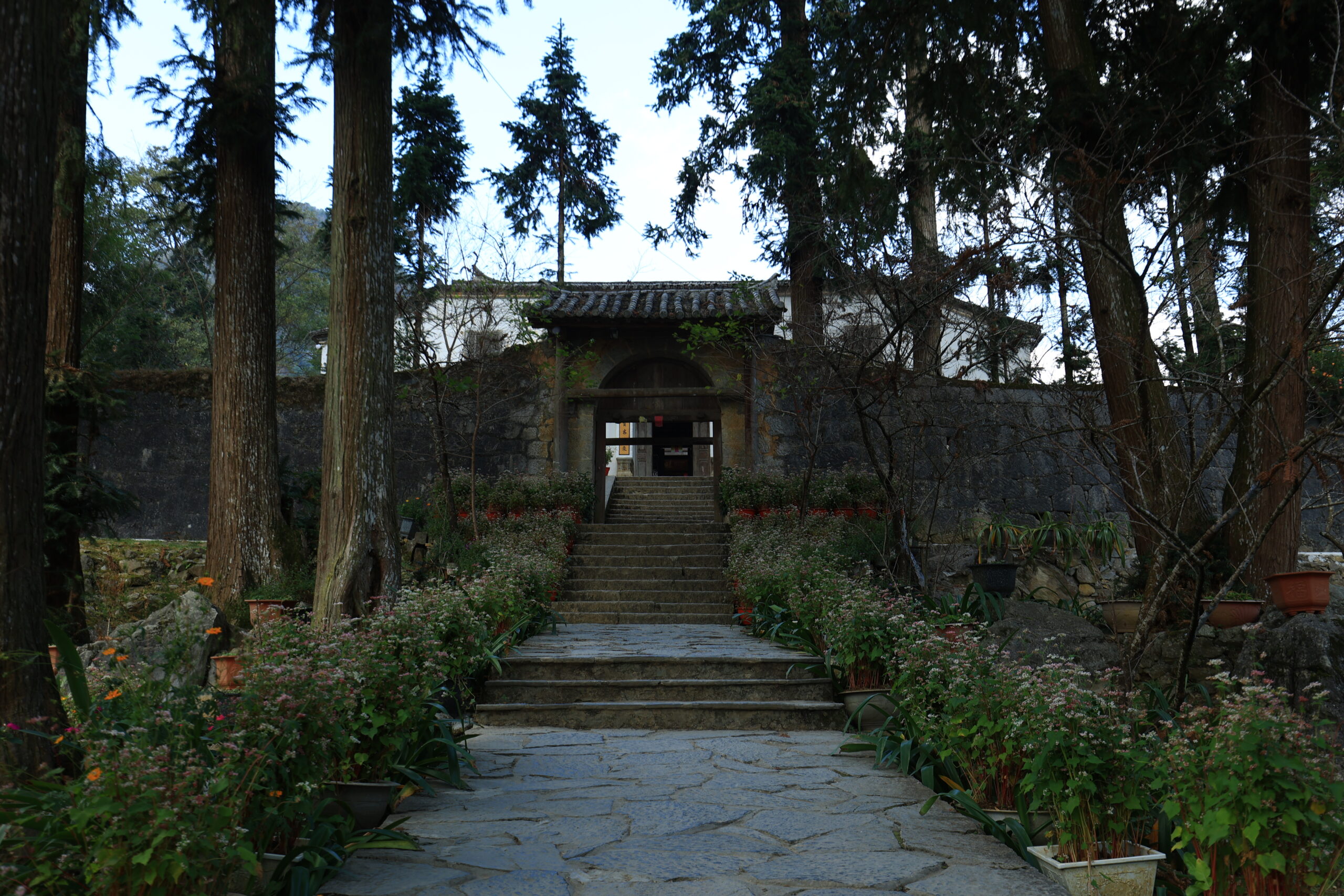
3.6 Pa Vi Hmong Village – Hmong Cultural Village
The Hmong Cultural Village (Pa Vi Hmong Village) in Pa Vi commune, Meo Vac district, lies approximately 155km from Ha Giang city center. This destination spans over 27,000m² and is home to 28 indigenous Hmong households.
The village showcases traditional architecture including stone wall houses, yin-yang tiled roofs, and surrounding stone fences. Here, visitors can tour the village, stay in homestays, enjoy local specialties, experience linen weaving, and learn about the culture through clothing, rituals, and ethnic music.
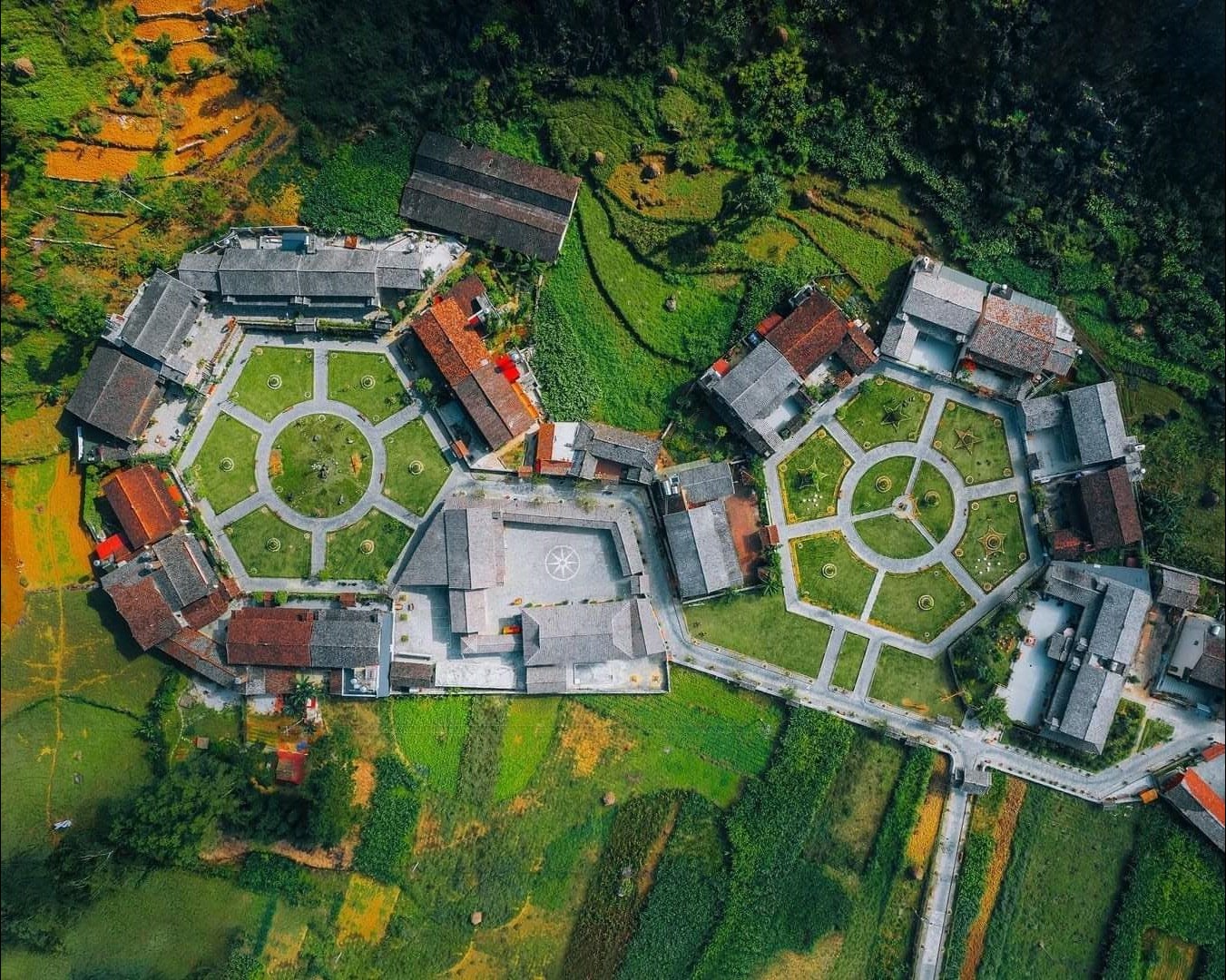
3.7 Ma Pi Leng Pass
Ma Pi Leng is one of northern Vietnam’s most treacherous mountain passes, stretching over 20km along National Highway 4C, connecting Dong Van and Meo Vac. This route was completed in 1965 after years of manual excavation, largely carried out by workers and youth volunteers who built the Happiness Road.
The pass clings to limestone mountainsides, rising hundreds of meters vertically, offering spectacular views of the Nho Que River and Tu San Gorge, which reaches depths of 700m. This destination is ideal for adventure enthusiasts, thrill-seekers, and photographers.

Ma Pi Leng Pass – The Majestic Beauty of Ha Giang’s Stone Plateau
3.8 Lung Cu Flag Tower – The Northernmost Point of Vietnam
From Ha Giang’s Kilometer Zero, travel an additional 170km north to reach Lung Cu Flag Tower – the symbol marking Vietnam’s northernmost point. This structure stands at 1,470m above sea level in Lung Cu commune, Dong Van district.
The current flag tower was newly constructed in 2010, coinciding with the September 2nd National Day celebrations. From the tower’s summit, visitors can gaze across Seo Lung Valley, Dong Van Karst Plateau, and Hmong villages winding through terraced fields. The quiet, fresh atmosphere here evokes feelings of pride and peace at this frontier of the homeland.
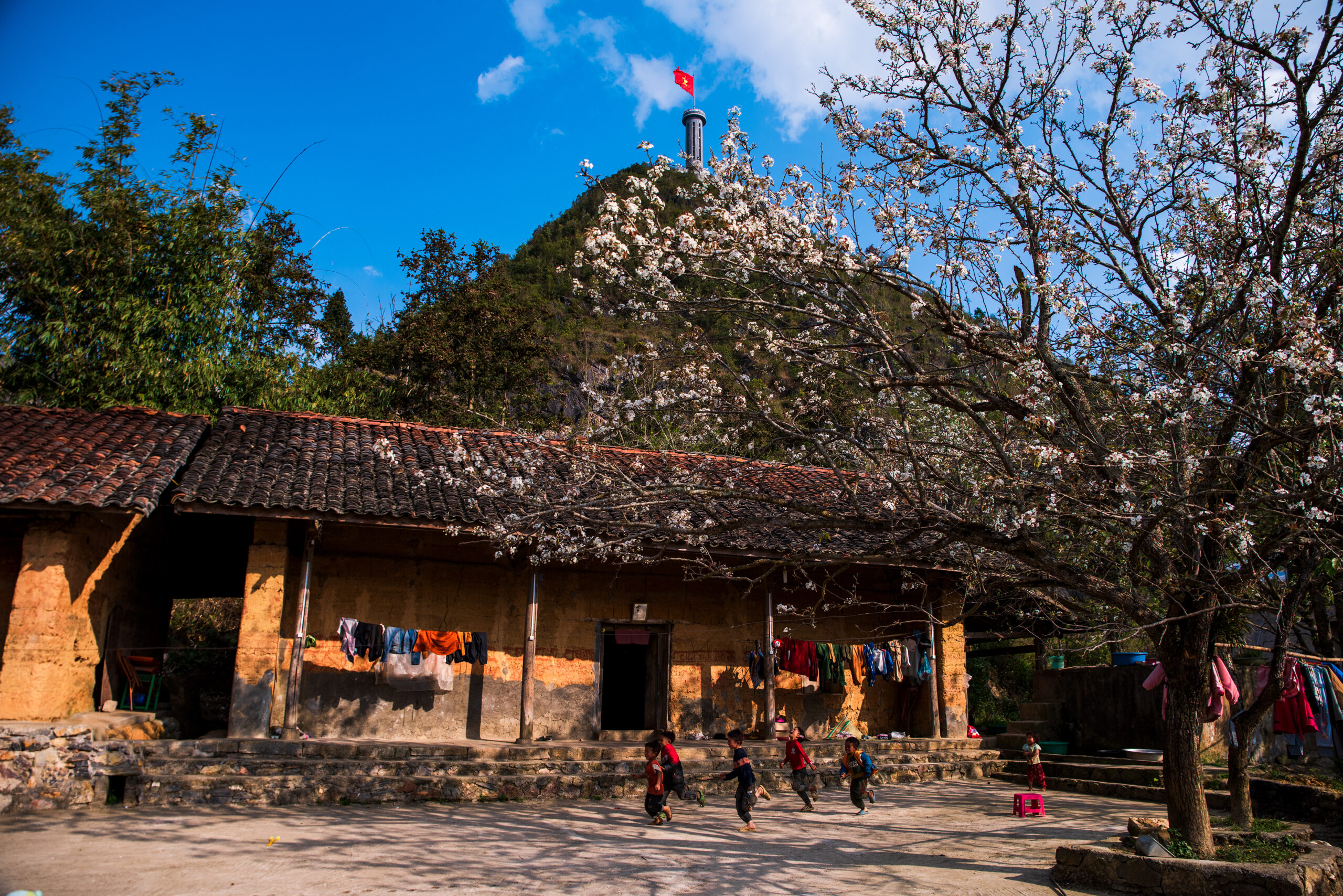
Phieu Travel’s Ha Giang tours are meticulously designed to help you fully experience every majestic feature along the northern rocky mountain route. The journey begins at Ha Giang’s Kilometer Zero milestone and takes you through iconic destinations like Ma Pi Leng Pass, Vuong Family Mansion, and Lung Cu Flag Tower. Let us accompany you and make your trip even more memorable!
Then Pa Village Ha Giang the essential guide to this hidden h’Mong gem
4. Tips for Taking Photos at Ha Giang’s Kilometer Zero
To capture memorable moments at Ha Giang’s Kilometer Zero milestone, keep these points in mind:
- Early morning or late afternoon offers soft, less harsh lighting that highlights facial features and creates attractive shadow effects for your photos.
- You can stand directly facing the camera, at a 45-degree angle, or have the photographer shoot from a lower position to capture the sky in the background. Take advantage of surrounding scenery like the square, Lo River, and trees to add depth to your photos.
- Try various poses to create depth in your images. A slow walking step, relaxed posture, or a moment of looking up at the milestone can add emotion to your picture.
- Keep your standing posture flexible. A slow step, a gaze into the distance, or a slight turn of your head toward the milestone will create a natural, unforced feeling.
- You might bring along simple accessories like a conical hat, scarf, or small flag for added interest. These details will make your photos more vibrant and personalized.
Phieutravel.com has just introduced you to information about Ha Giang’s Kilometer Zero milestone. Though not a bustling tourist attraction with many services, this place holds special significance for adventure travelers. Stopping here to take a photo marks the beginning of your journey to conquer the majestic rocky plateau of northern Vietnam.
Read more:
- Ha Giang Lonely Tree: A 250-Year-Old Attraction & Photo Spot
- Ha Giang stone cake: How to prepare this unique highland delicacy
- Ha Giang in November: A Guide to the Buckwheat Flower Fields
- Lung Ho, Ha Giang complete guide to Vietnam’s Hidden Gem
- Worst time to do the Ha Giang Loop safety stories 2025

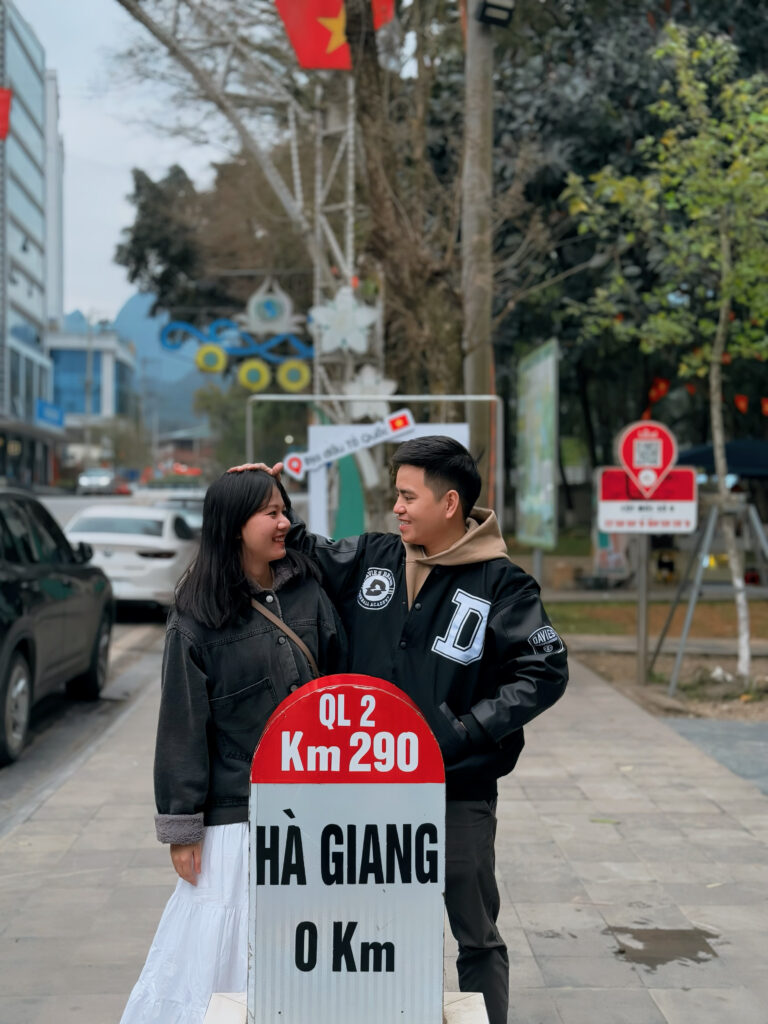
You Might Also Like
Ha Giang Weather in September: Complete Guide for Travelers
Exploring the magnificent Ha Giang Loop in September offers travelers a perfect balance of favorable[...]
Quan Ba Twin Mountains: Ha Giang’s Iconic Fairy Hills and Complete Travel Guide
The mystical Quan Ba Twin Mountains rise from the emerald valleys of Ha Giang like[...]
Vuong family mansion: the architectural marvel and cultural legacy of Ha Giang
Deep in Vietnam’s northern highlands, where mist-shrouded mountains meet terraced rice fields, stands a testament[...]
Ha Giang Loop Safety Tips: How to Ride Securely in Vietnam’s Northern Mountains
The Ha Giang Loop, with its winding mountain roads and breathtaking landscapes, offers one of[...]
The Ultimate Guide to the M-Shaped Curve on Ha Giang Loop
Vietnam’s remote northern province of Ha Giang hides a natural wonder that has captivated adventurous[...]
Most Beautiful Places to Visit in Vietnam: Essential Destinations and Insider Tips
Vietnam captivates travelers with its stunning landscapes, rich cultural heritage, and warm hospitality. From mist-shrouded[...]
Beyond the Beaten Path: Discovering Ha Giang Province in Northeast Vietnam
Ha Giang Province in Northeast Vietnam stands as one of the country’s last frontiers for[...]
Rainy season in Ha Giang: what to expect, when to go, and travel tips
Vietnam’s northern frontier reveals a different face during the rainy season, transforming Ha Giang’s limestone[...]